Elvas is one of the most beautiful cities in Portugal and, along with Évora, stands out in the Alentejo region, just a few kilometres away from the border with Spain. Join me and discover the biggest fortified city in Europe, listed by UNESCO as a World Heritage Site.
To know more about the history of this city we have to go back several centuries until we find the presence of the Celts – considered as the first settlers of these lands.
Afterwards, the Romans arrived to the Iberian Peninsula and, despite facing some resistance, they settled here around 155 B.C.
Disclosure: This post may contain affiliate links, meaning i get a commission if you decide to make a purchase through my links, at no cost to you. Please read my disclosure for more info.
The Romans were, in fact, the first people to leave significant traces of their presence here, at a time when the settlement that would come to be Elvas began to play an important role in patrolling the commercial routes and people passing by.
With the decline of the Roman Empire, six centuries later, the Visigoths came and remained on these lands for 200 years.
From the 8th century onward, the Moors settled in this region. Soon after, they would acknowledge the settlement and its important strategic role which led to its demographic growth.
In fact, it was during the Moorish occupation that the first ramparts were built – one in the 9th century and the other in the 12th century, due to the settlement’s growth both in size and in population.
The final chapter came in the 13th century, when Elvas finally became part of the Portuguese kingdom and acquired its status as a “city-fortress” by the time of the Portuguese Restoration War, from 1640 to 1668.
This status was due to the fact that this was the closest way to get to the Portuguese capital, Lisbon, and, because of that, there was the need to protect this region. This way, and for centuries to come, Elvas had a key role and became one of the most important cities in Portugal.
What to visit in Elvas?
Sommaire
Historic Centre
You can drive all the way to the magnificent historic centre of Elvas, inside the beautiful ramparts. Here, you can begin your visit at the castle of Elvas, where you can park your car.
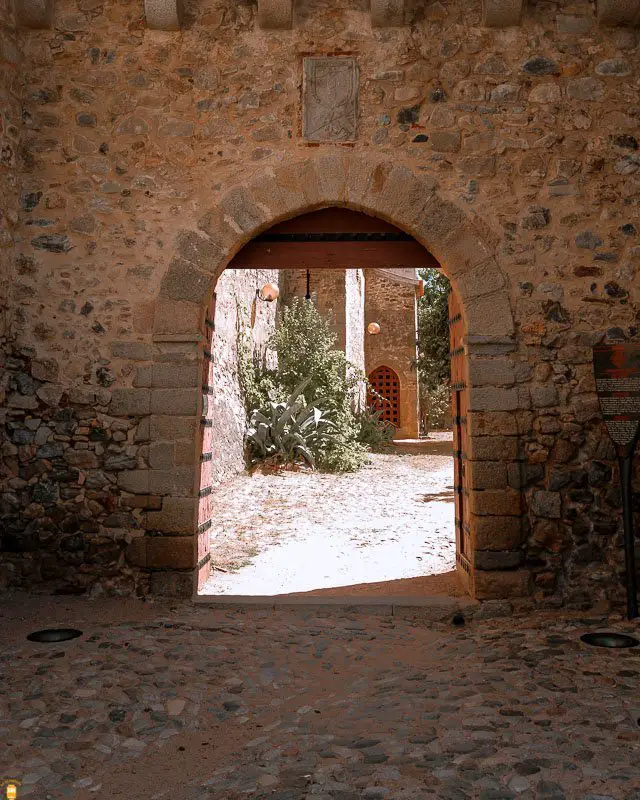
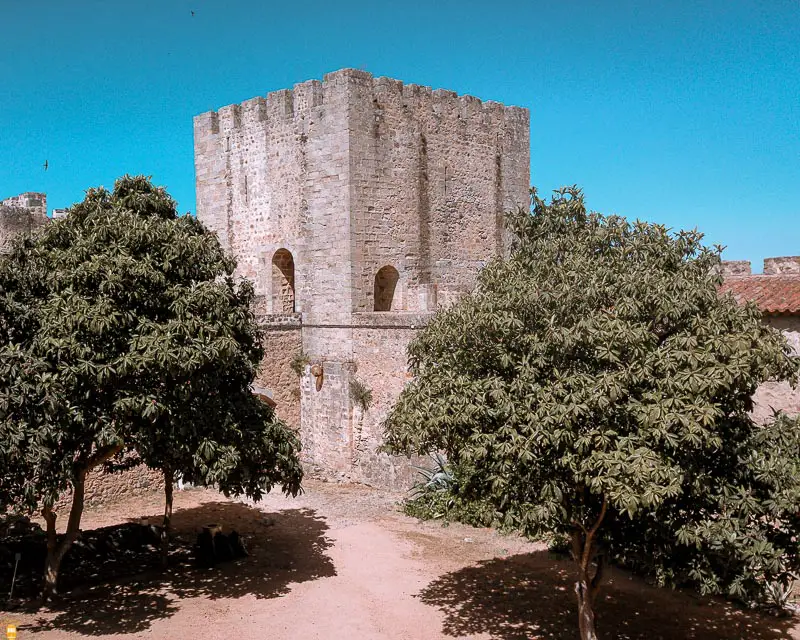
This Moorish-origins castle was rebuilt in the 13th and 14th centuries but it was only in the 16th century that it got its final shape. The castle was the first building to be classified as a Portuguese national monument and is presently part of the fortifications and other structures listed by UNESCO as World Heritage since 2012.
After your visit to the castle, know that you can go from here to any direction and discover other points of interest in the city. In fact, the beautiful castle is a great starting point to begin your walk through the typical streets of the historic centre of Elvas.

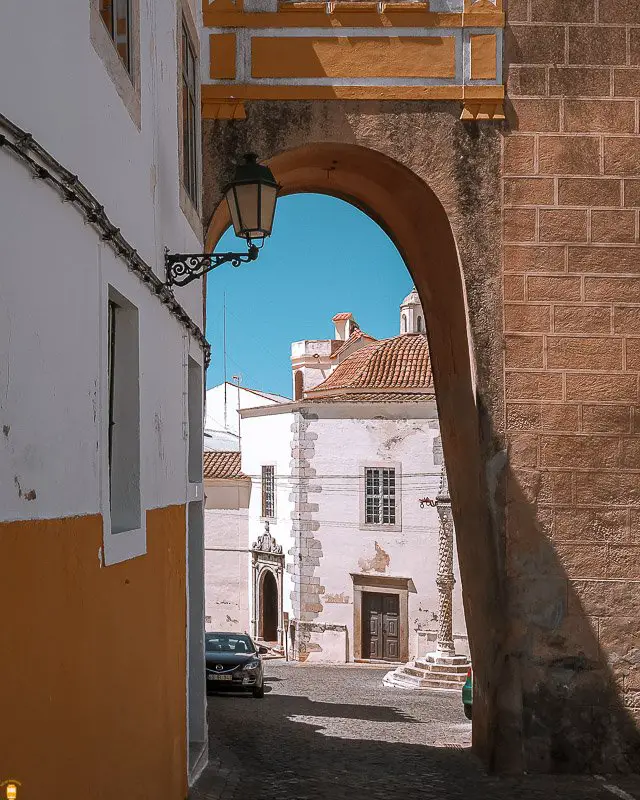
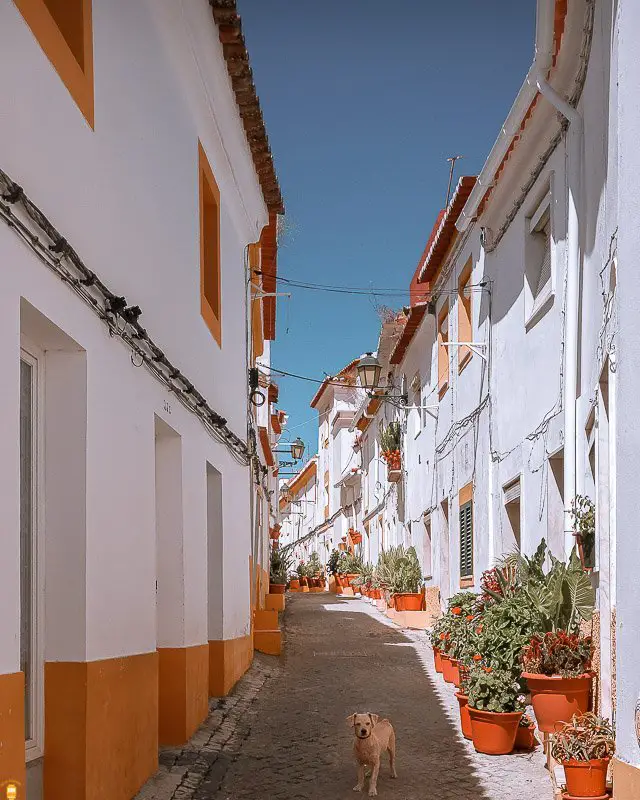
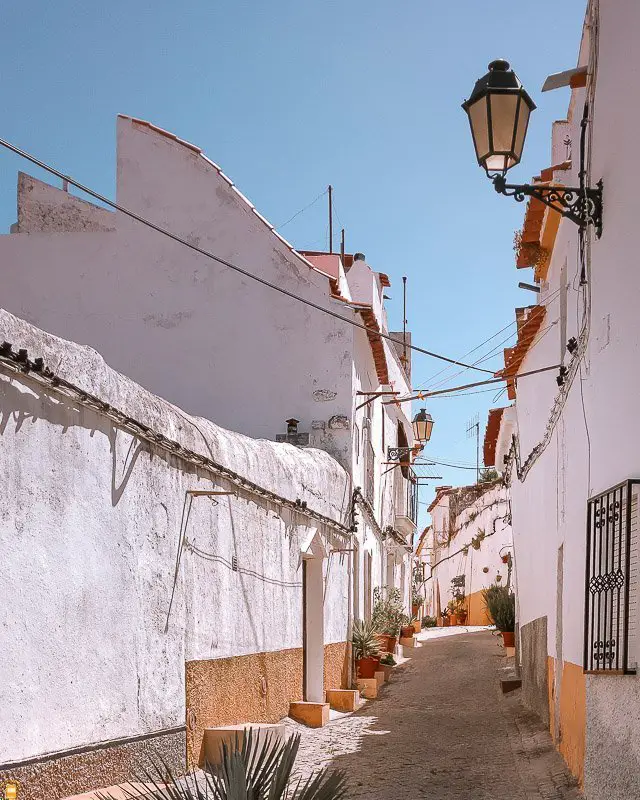
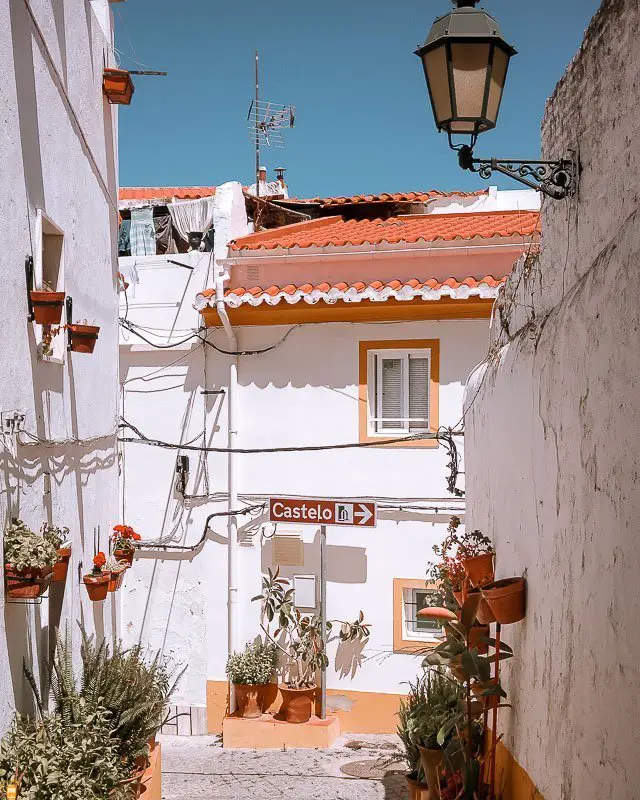
If, by any chance, you can’t or don’t want to stroll through the streets, then you can drive to the square Praça da República where you’ll find an underground parking lot.
This square is full of life and is right in the middle of the historic centre, a place where you’ll find the wonderful (church) Igreja de Nossa Senhora da Assunção, once Cathedral of Elvas.

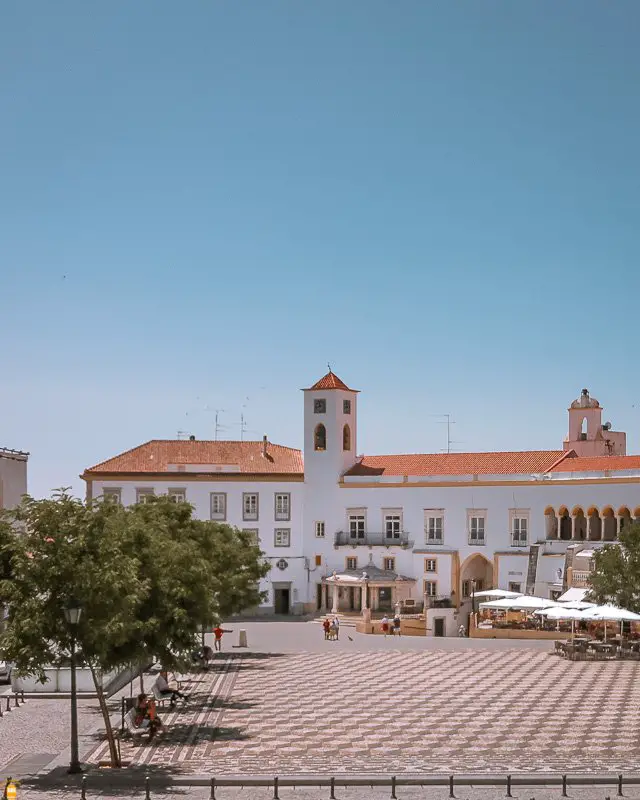
Built in the 16th century, this church is definitely one of the places you must visit since it is a magnificent structure, representative of the Manueline and Baroque styles.
Throughout the centuries the church underwent several changes but I must point out its amazing neoclassical portal and the presence of glazed tiles and a magnificent 18th century organ.
After having visited and admired the square and the church, you can explore the surrounding area and discover other points of interest such as: the Cemitério dos Ingleses (English Graveyard), the (church) Igreja de São Domingos, the Photography City Museum and the beautiful Elvas Contemporary Arts Museum.
Don’t miss the opportunity to walk alongside the ramparts that limit the historic centre of this city – it is definitely a great experience!
Amoreira Aqueduct
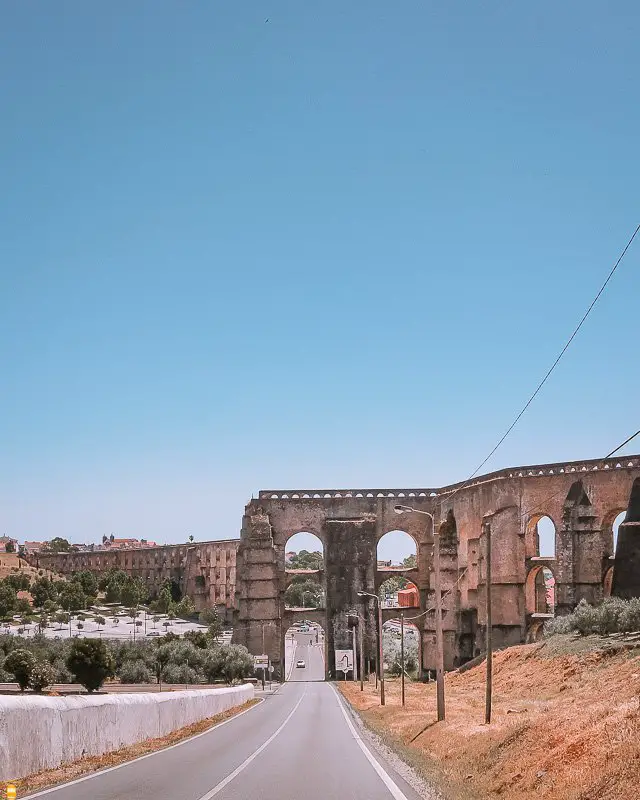
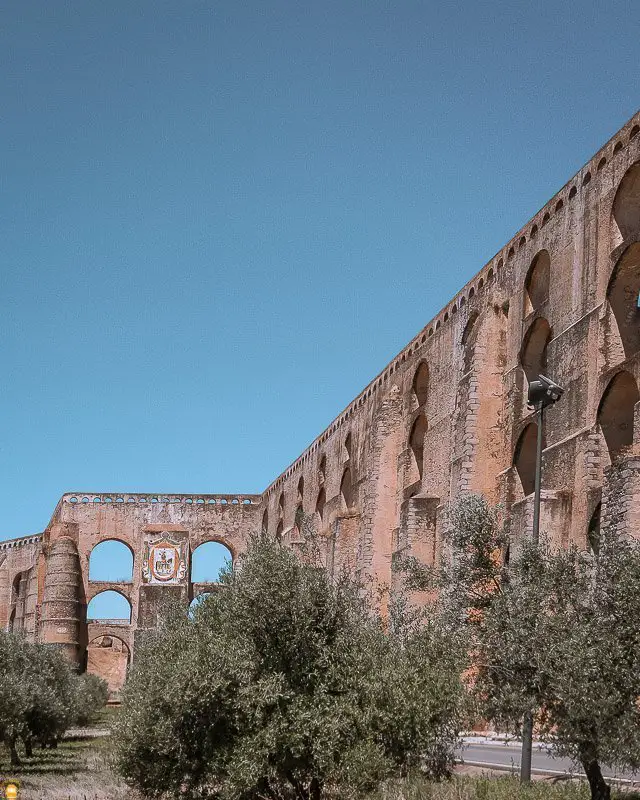
Before you get to the historic centre of Elvas, you’ll come across with the biggest aqueduct in the Iberian Peninsula – the majestic Amoreira Aqueduct.
This magnificent icon of the Portuguese civil architecture was built between the 16th and 17th centuries and had several setbacks during its construction due to lack of funds and the coming into power of king Filipe I of Portugal (Filipe II of Spain).
Being one of the monuments in Elvas listed by UNESCO as World Heritage, the Amoreira Aqueduct has an approximate extension of 7 km and a maximum height of 31 metres; what also stands out is the 843 arches of this aqueduct.
Fort of Nossa Senhora da Graça


Around 3 km north of the historic centre of Elvas you’ll find one of the forts that constituted the line of defense of Elvas stronghold, the Fort of Nossa Senhora da Graça.
This fort was built due to the need of controlling one of the most important areas in that region, the Monte da Graça (Graça Hill), a place that was raided and occupied several times by the Spanish army. Because of that, its construction was inevitable and occurred in the 18th century, strengthening the Portuguese presence next to the border with Spain.
Sadly, as time went by, the fort lost its relevance and became a political prison until, some years later, was completely abandoned. In 2014 this monument underwent consolidation and refurbishment works becoming what it is today – one of the main tourist attractions in this region.
- Location: Monte Senhora da Graça, Alcáçova, 7350 Elvas
- Tickets: Free tour or guided tour
Fort of Santa Luzia
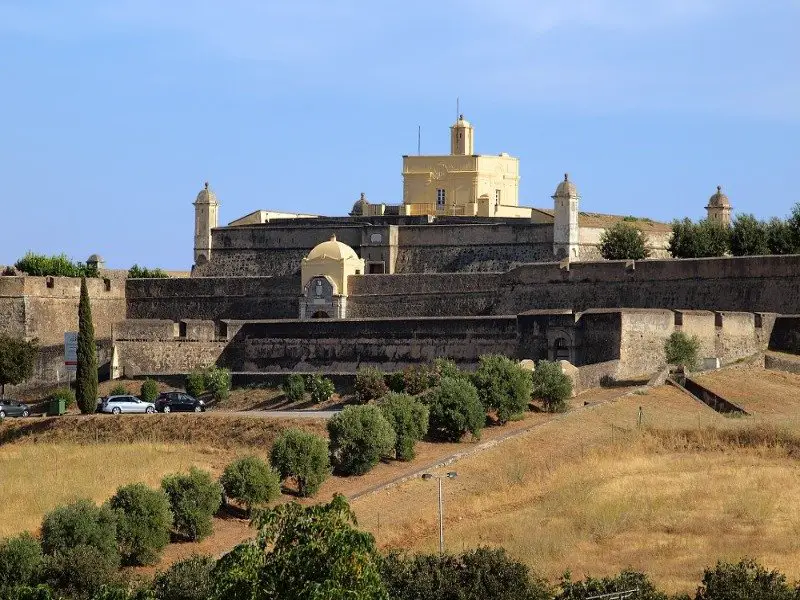
Contrary to the previous fort, the Fort of Santa Luzia is located south of Elvas stronghold and was also part of the line of defense of this region.
This star-shaped fort was built between 1641 and 1648 and played an important role during the Portuguese Restoration War. During that period, the fort never gave in to the Spanish attacks, even during the siege that happened between October 1658 and January 1659.
Currently, you can visit this fort that was converted into a military museum. Here, you’ll find all the information about the evolution of several Elvas military, religious and civil buildings and about the most important battles in which the city was involved.
- Location: Forte de Santa Luzia, 7350, Elvas
If you’re still not convinced, watch this short video about the city of Elvas, one of the most beautiful cities in Portugal:
What to visit near Elvas?
Ajuda Bridge
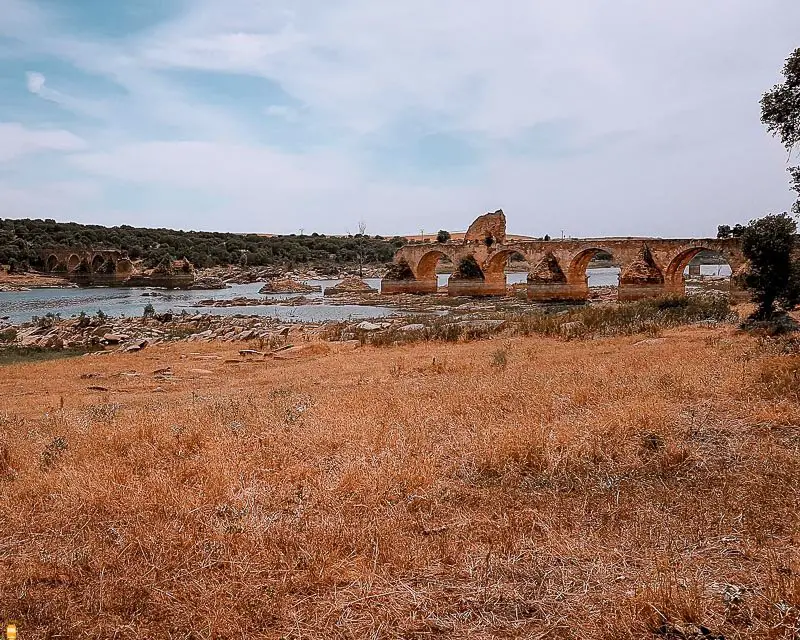
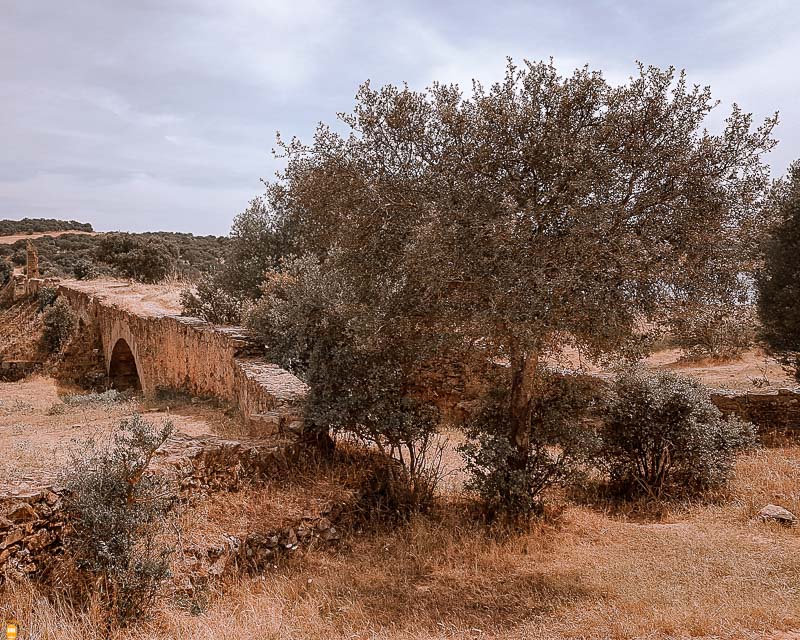
Located 12 km away from the historic centre of Elvas, we can find a bridge that played throughout some centuries an important role in the connection of the Portuguese towns of Elvas and Olivença – currently, this is a cause of contention between Portugal and Spain because both claim the right to control the town of Olivença.
Commissioned by the Portuguese king D. Manuel I in 1510, the Ajuda Bridge was built on the Guadiana river but, due to constant flooding and bad weather in the end of that century, some of the arches collapsed.
Some years later, in the 17th century, the bridge was rebuilt but, during the Portuguese Restoration War, it would be destroyed by the Spanish army. However, its reconstruction was a priority after the war ended.
In the beginning of the 18th century the Spanish army destroyed it once again and it remains the same until today even though it is considered a Portuguese monument of national interest.
Juromenha


Located 18 km away from Elvas, you’ll find the beautiful village of Juromenha. This village with around 100 inhabitants and next to Guadiana river stands the test of time. It was once a control post of the waters in this region.
As it happened all over this border region, it was also necessary to build a fort in this village by the time of the Portuguese Restoration War. In fact, it was more of an improvement and modernization of the fortification that already existed there.

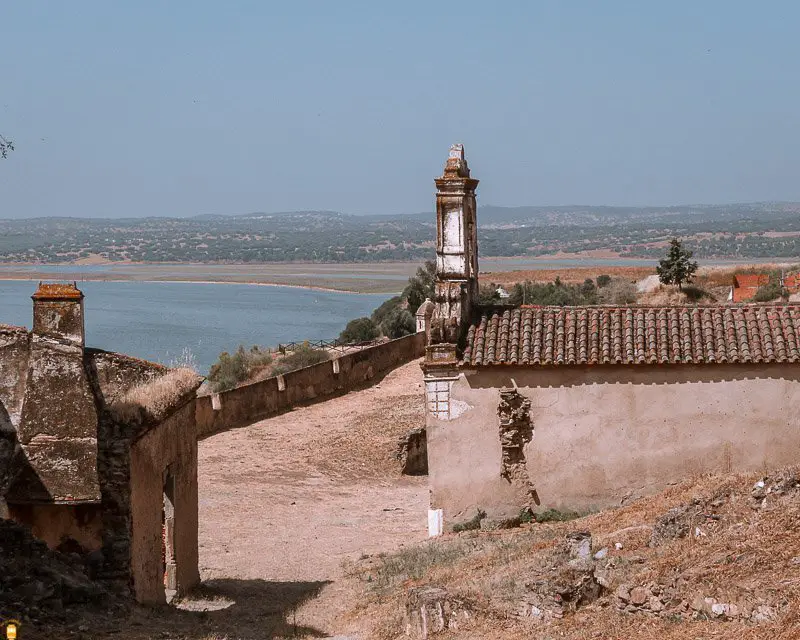
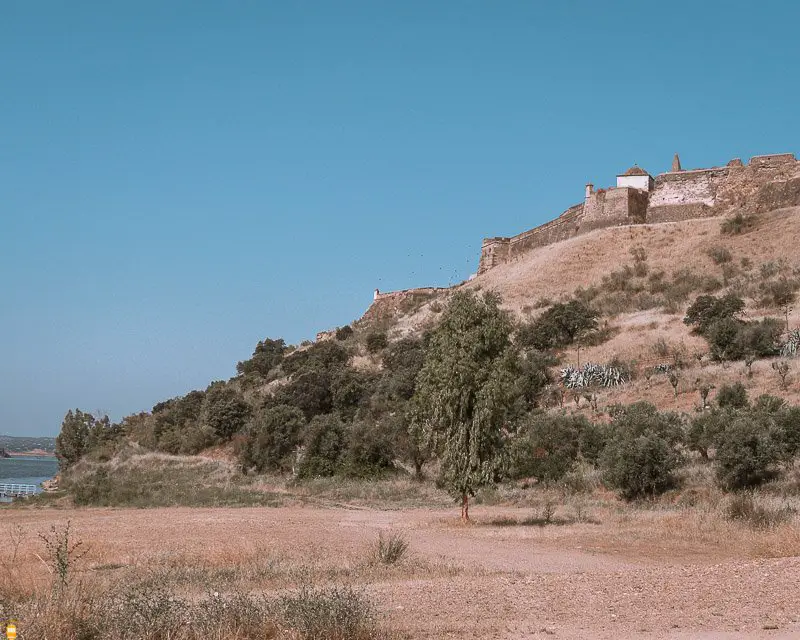

Today, and despite all the consolidation and refurbishment works, this fort is currently in a state of abandonment. However, it is still an important historic reference in this region and is definitely worth your visit!
Apart from Elvas and some unknown places like the Ajuda Bridge and Juromenha, take the opportunity to further explore this region and discover some other monuments such as the castle of Campo Maior, to the north, or the castle of Borba and the magnificent Ducal Palace of Vila Viçosa, to the south. All these places are located less than 40 km from the historic centre of Elvas, so you should visit them.
Summing up, we can say that this Alentejo region is very rich in history and in religious, military and civil heritage. Discover the “Garrison Border Town of Elvas and its Fortifications“, World Heritage Site since 2012, and be amazed with such beauty!
Where to sleep in Elvas

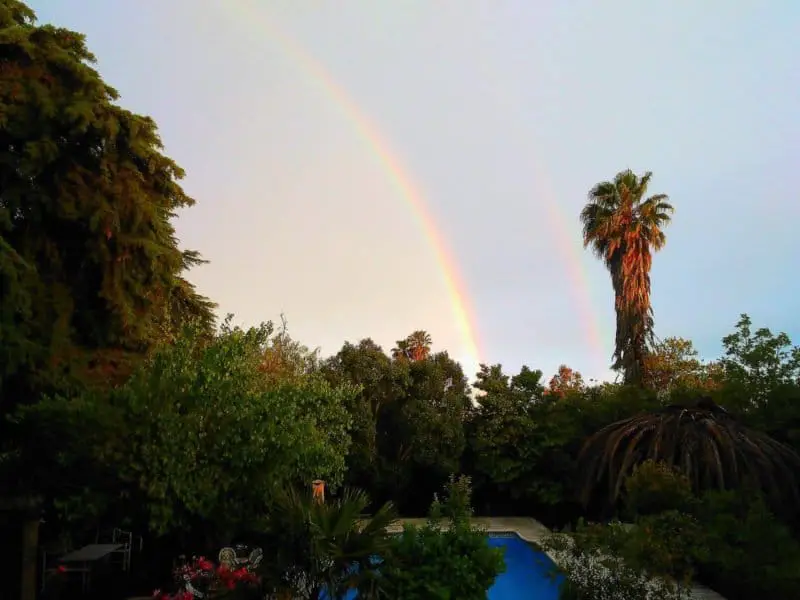
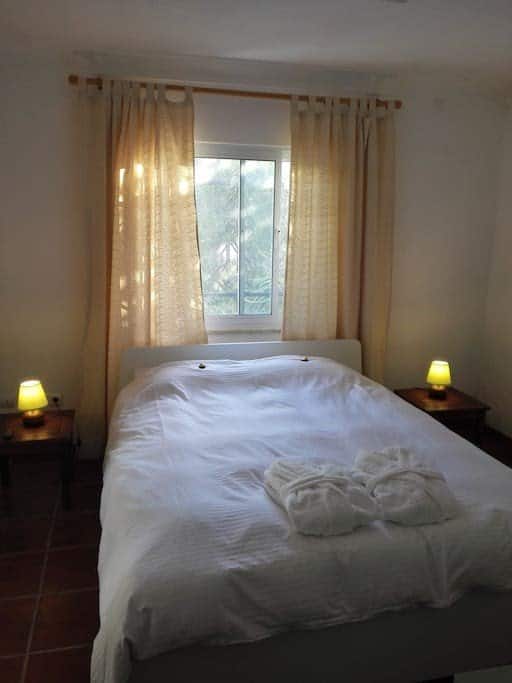
In order to relax before and after exploring the beautiful city of Elvas and its surroundings, I recommend that you book a room in Quinta Vale de Marmelos .
Located only 3 km from the historic centre, this villa is perfect since it is secluded, away from the hustle and bustle of the city and, because of that, it offers to its guests times of complete relaxation and tranquillity.
In this beautiful place you can also enjoy the pleasant pool, sunbathe in one of the terraces or go for a walk inside this 2-hectare property, where you can admire the olive, lemon and orange trees.
Apart from all this, know that you can book at this villa one of two isolated and self-sufficient houses or one of the four rooms available at the main house, where you’ll have the opportunity to enjoy an amazing breakfast.
Are you going to visit Elvas? Then don’t hesitate to book a room in Quinta Vale de Marmelos, your car or the best activities by clicking the links below. This way you are helping me in the development of my blog and I’ll be able to offer you free tips and travel guides so that you can better prepare your visit to Portugal. Thank you!

